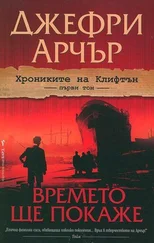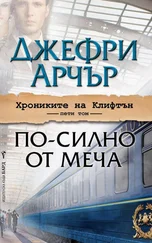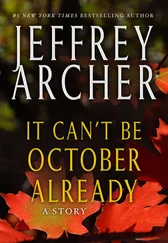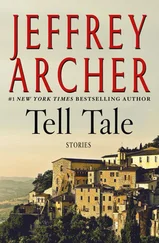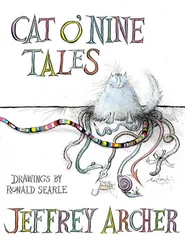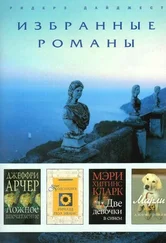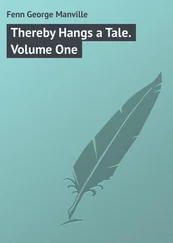Grebenar only needed one more disciple to complete the twelve, but when no new canvas had appeared for over a year and Bloch was never to be found in his studio during the day, the lawyer decided the time had come to withhold his weekly allowance. But it was not until every ale house in Hertzendorf had refused to serve him before his slate had been cleared that Bloch reluctantly returned to work.
Five months later he produced a dark, forbidding image of Judas Iscariot, thirty pieces of silver scattered on the floor around his feet. Historians have suggested the portrait mirrored the artist’s own mood at the time, as the face is thought to be in the image of his patron. Grebenar was amused by Bloch’s final effort, and bequeathed the twelve portraits of Christ’s disciples to the town’s recently built museum, so that they could be enjoyed by the local citizens long after both the artist and his patron had departed this world.
It was over a game of chess with his friend Dr Müller that Grebenar learned his protégé had contracted syphilis and had only months to live — a year at the most.
‘Such a waste of a truly remarkable talent,’ said Dr Müller.
‘Not if I have anything to do with it,’ retorted Grebenar, as he removed the doctor’s queen from the board.
The following morning Herr Grebenar visited Bloch in his rooms and was horrified to discover the state the artist was in. He was lying flat on his back, fully clothed, stinking of ale, his arms and legs covered in raw, pustulous scabs.
The lawyer perched on the end of the bed. ‘It’s Herr Grebenar,’ he said softly. ‘I’m distressed to find you in this sorry state, old friend,’ he added to a man who was only thirty-four. ‘Is there anything I can do to help?’
Bloch turned to face the wall, like an animal who knows death approaches.
‘Dr Müller tells me you’re unable to pay his bills, and it’s no secret you’ve been running up debts all over town and no one will grant you any more credit.’
Not even the usual cursory grunt followed this observation. Grebenar began to wonder if Bloch could hear him. The lawyer leaned over and whispered in his ear, ‘If you paint one last picture for me, I’ll clear all your debts and make sure the doctor supplies you with any drugs you need.’
Bloch still didn’t move.
Grebenar saved his trump card until last, and when he’d played it, the artist turned over and smiled for the first time in weeks.
It took Bloch nearly a month to recover enough strength to pick up a paintbrush, but when he finally managed it, he was like a man possessed. No drink, no women, no debts. Just hour after hour spent working on the canvas that he knew would be his final work.
He completed the painting on 17 March, 1679, a few days before he died, drunk, in a whore’s bed.
When Grebenar first set eyes on The Last Supper he recalled the final words he had spoken to the artist: ‘If you achieve what you are capable of, Friedrich, unlike me you will be guaranteed immortality.’
Grebenar couldn’t take his eyes off the haunting image. The twelve disciples were seated around a table, with Christ at the centre breaking the communion bread. Although each one of the Apostles sat in different poses and leaned at different angles, they were unmistakably the same twelve men whose portraits Bloch had painted during the past decade. Grebenar marvelled at how Bloch had achieved such a feat since once they had left his studio, the artist had never set eyes on them again. Grebenar decided there was only one place worthy of such a masterpiece.
Herr Grebenar fulfilled the Maker’s contract of three score years and ten. As he approached death, he had only one interest left in life: to ensure that his protégé’s works would remain on permanent display in the town museum, so that in time everyone would acknowledge Friedrich Bloch’s genius, and he himself would at least be guaranteed a footnote in history.
Two hundred and ninety-eight years later...
It all began when a drop of rain fell on the chief sidesman’s forehead during Monsignor Grebenar’s Sunday morning sermon. Several members of the congregation looked up at the roof and one of the choirboys pointed to a small crack.
Once Monsignor Grebenar had delivered his final blessing and the congregation began to depart, he approached an elder of the church to seek his advice. The master builder promised the priest he would climb up on to the roof and inspect the timbers the following morning.
A preliminary opinion and a rough estimate as to the costs of repair were delivered to the Grebenars’ family home on the Wednesday afternoon, along with a warning that if the church council did not act quickly, the roof might well collapse. Monsignor Grebenar received confirmation of the master builder’s opinion from above when, during Vespers on the following Sunday, a steady trickle of rain began to fall on the front row of the choir as they chanted the ‘Nunc Dimittis’.
Monsignor Grebenar fell on his knees in front of the altar, looked up at Friedrich Bloch’s Last Supper and prayed for guidance.
The collection that followed raised the princely sum of 412 euros, which wasn’t going to make much of an impression on the master builder’s estimate of the 700,000 euros needed to repair the roof.
If Monsignor Grebenar had been a more worldly man, he might not have considered what happened next to be divine intervention. When he had finished praying, he crossed himself, rose from his knees, bowed to the altar and turned to find someone he had never seen before seated in the front pew.
‘I understand you have a problem, Father,’ the man said, looking up at the roof. ‘And I think I may be able to help you solve it.’
Monsignor Grebenar looked more closely at the stranger. ‘What did you have in mind, my son?’ he asked.
‘I would be willing to pay you seven hundred thousand euros for that painting,’ he said, glancing up at The Last Supper .
‘But it’s been in my family for over three hundred years,’ replied Monsignor Grebenar, turning to look at the painting.
‘I’ll leave you to think it over,’ said the stranger. When the priest turned round, he was gone.
Monsignor Grebenar once again fell to his knees and sought God’s guidance, but his prayer had not been answered by the time he rose to his feet an hour later. In fact, if anything, he was in even more of a dilemma. Had the stranger really existed, or had he imagined the whole thing?
During the following week Monsignor Grebenar canvassed opinion among his parishioners, some of whom attended the following Sunday’s service with umbrellas. Once the service was over, he sought advice from a lawyer, another elder of the church.
‘Your father left the painting to you in his will, as did his father before him,’ said the lawyer. ‘Therefore it is yours to dispose of as you wish. But if I may offer you one piece of advice,’ he added.
‘Yes, of course, my son,’ said the priest hopefully.
‘Whatever you decide, Father, you should place the painting in the town’s museum before it’s damaged by water leaking from the roof.’
‘Do you consider seven hundred thousand a fair price?’ asked the priest.
‘I have no idea, Father. I’m a lawyer, not an art dealer. You should seek advice from an expert.’
As Monsignor Grebenar did not have an art dealer among his flock, he phoned the leading auction house in Frankfurt the following day. The head of the Renaissance department did not assist matters when he told him there was no way of accurately estimating the true value of Bloch’s masterpiece, since none of his works had ever come on the market. Every known example was hanging in one museum, with the notable exception of The Last Supper . The priest was about to thank him and put down the phone when the man added, ‘There is, of course, one way you could find out its true value.’
Читать дальше
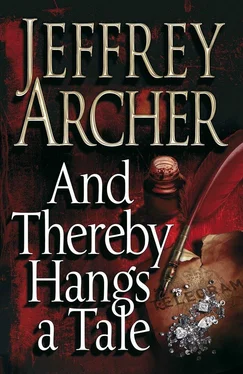
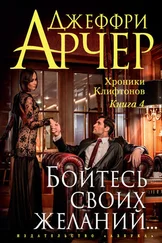
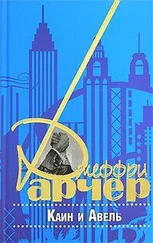
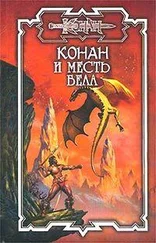
![Джеффри Арчер - The Short, the Long and the Tall [С иллюстрациями]](/books/388600/dzheffri-archer-the-short-the-long-and-the-tall-s-thumb.webp)
